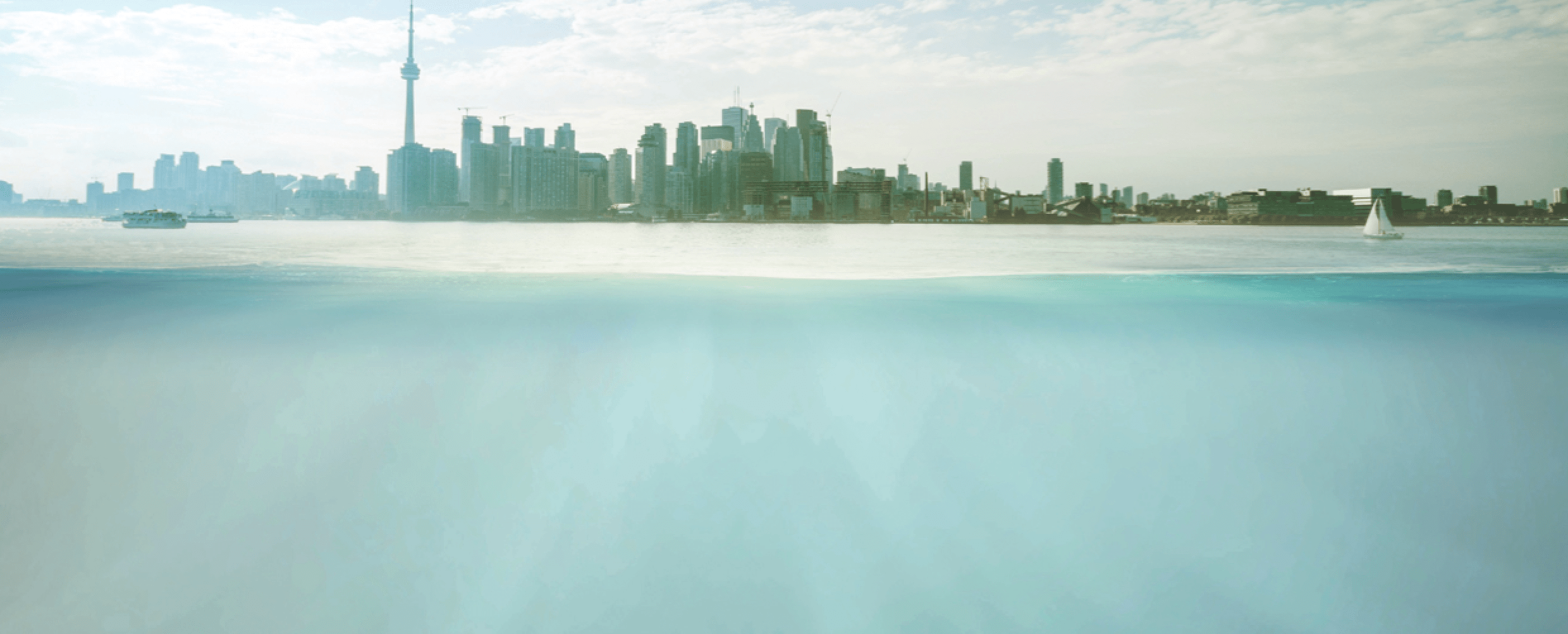Is it possible to design a course that benefits its students, supports an external organization, affects societal change and redefines the classroom? Can cooperative learning educate and illuminate, and at the same time, provide tangible benefits for students and partner organizations alike?
For Bonnie McElhinny, Associate Professor of Anthropology at U of T, that was the goal of her first year undergraduate course Living on the Water’s Edge of Toronto.
The course, which introduces students to anthropology, uses a wide range of media, field trips, and independent research to explore how people think about, imagine, and interact with water.
“I wanted them to think, too, about contemporary indigenous ways of understanding water, as a way of thinking about what it means to be on traditional territories,” says Professor McElhinny.
A major component of the course was a collaboration with Lake Ontario Waterkeeper – a registered independent Canadian charity dedicated to ensuring a swimmable, drinkable, fishable Lake Ontario. Students participated in The Watermark Project, an ongoing community effort to collect and archive first-hand accounts about the ways Canadians interact with water. The students wrote or collected 89 stories to contribute to the pilot project.
Student Naomi Cardoz, who gathered a collection of five watermark stories, said, “What I found most powerful in these pieces was the way that water was transformed from an element into an entity. I would like to expand on the notion that water is not just a commodity, but it has the ability to hold memories.”
The students were introduced to a number of different ways of investigating and writing about water. They used source material including ethnography and film, poems and fiction and maps and photos. Students also analyzed what each of these forms of representation was able to do and not do.
Students analyzed how the stories they gathered were shaped by a number of social identities – gender, national background, age, earlier experiences with water, which waterbody was being written about and whether water was readily available or scarce. They also analyzed how the strategies they used for eliciting the stories shaped the stories, and which strategies worked best.
The class is a reflection of Toronto, in all of its diversity, and the stories the students told and collected are part of a broader conversation about water.
“As an immigrant that was able to juxtapose my two experiences of water from both the Philippines and Canada, I became interested in determining whether other immigrants have had a similar experience, where their upbringing affected their understanding of water,” said student Samantha Quinto.
The project also offered opportunities for students to practice several different kinds of writing including autobiographical, biographical, analytical research and report/action recommendations to Lake Ontario Waterkeeper on how to refine the project.
Mark Mattson, president and co-founder of Lake Ontario Waterkeeper, and Krystyn Tully, vice-president and co-founder, each visited the classroom to discuss the work of Lake Ontario Waterkeeper and the Watermark pilot project. Krystyn Tully returned – after the students had gathered and analyzed stories, and debriefed the project – to talk with the students about some of the ways their work had changed the on-going project.
According to Krystyn Tully, “The collaboration was an incredible experience for Waterkeeper…The insight and feedback provided by the students was key to helping to validate one of our core assumptions: that finding and sharing a Watermark is a powerful way to establish or strengthen the connection between two people.”
Field trips exposed students to a variety of people working on water and provided an opportunity to experience water in various places in Toronto. Speakers with unique perspectives and connections to water were also brought into the classroom.
At the conclusion of the course, nine pages of recommendations, distilled from the student papers, were forwarded to Lake Ontario Waterkeeper. Their suggestions included how to ask questions in ways that elicited better and more detailed stories, how to solicit more and different kinds of contributors, as well as ways to disseminate knowledge about the project.
The success of Living on the Water’s Edge of Toronto has led Professor McElhinny to develop several future projects with Lake Ontario Waterkeeper – including a second-year Research Opportunity Program course and the possibility of a third-year students story-collection project in northern Ontario.
The immersive learning model, as a course foundation, shows that it’s possible for students to learn while affecting change, to observe while interacting, all the while creating outcomes that benefit us all.
WATERKEEPER STORY
Wolfgang Hartmann’s Story, Collected by Cassandra Hartmann (and translated from German)
I was in fifth grade living in the centre of Munich. On my way home from school, I had to cross the Isar River. It was January and I was with my best friend Gunther. The weather in Munich tends to be quite warm, so the river only froze over every three years or so. This was one of those special years. The two of us decided to go onto the ice together, despite the fact that we weren’t allowed to.
We wanted to see how thick the ice so we took a stick and started chopping holes. After making the first hole, we wanted to see what the result would be about a foot away from it. We kept chopping holes in the ice, each about a foot away from the previous, in a circle around us.
All that chopping made the ice around us brittle, and after about twelve holes, the circle finally gave, and we fell in. The river is usually quite deep, but we were standing somewhere relatively shallow, and the water only reached to our stomachs. It was absolutely freezing cold, and I was in shock when it hit me. We pulled ourselves back onto the ice, absolutely soaked and feeling cold, scared, and pretty stupid.
At first we were too afraid to go home; we knew our parents would punish us, that they’d probably hit us. But our wet pants were quickly frozen solid, and it was horribly cold, so we decided to go home anyways because we figured that way the beating wouldn’t hurt as much. Fortunately, our parents didn’t end up hitting us, but we weren’t allowed to go outside and play for a while. If nothing else, this experience taught me that the ice on a river always needs to be treated with a great deal of respect.























